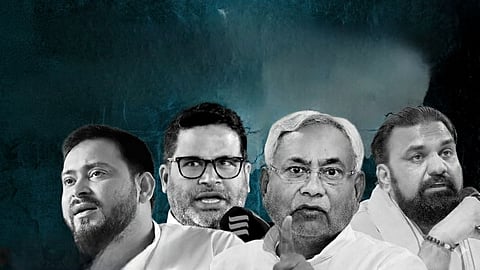
- Home
- Live Blog
- Breaking News
- Top Headlines
- Cities
- NE News
- Sentinel Media
- Sports
- Education
- Jobs

Guwahati: As vote counting Vote counting began this morning, November 14, Bihar braces for a decisive outcome that will determine the future of all 243 Assembly constituencies. The result will decide whether Chief Minister Nitish Kumar, the state’s longest-serving leader, secures another term or whether the Mahagathbandhan ushers in a change after nearly two decades of his leadership.
The polls, held in two phases on November 6 and 11, saw a record turnout of 67.13%, the highest in the state’s electoral history. More than 7.45 crore voters cast their ballots to choose from 2,616 candidates. Counting started at 8 a.m. with postal ballots, followed by EVM votes from 8:30 a.m.
The Election Commission has termed this a “model election,” noting zero repolls and unprecedented participation. Across 38 districts, 46 counting centres have been secured with multiple layers of security. Over 4,300 counting tables have been set up, each manned by a supervisor, assistant and micro-observer. More than 18,000 counting agents representing various candidates are overseeing the process. CAPF personnel guard the strongrooms, district police maintain the outer ring, and CCTV surveillance with dedicated control rooms ensures transparency.
Political tensions rose on the eve of counting. RJD leader Tejashwi Yadav said the party was prepared to resist “any unconstitutional activity.” The BJP dismissed the charge, saying the opposition was showing “desperation,” and expressed confidence that the people’s mandate favours the NDA.
In a last-minute administrative move, the Election Commission replaced the returning officer of Chenari constituency, a step officials described as necessary for transparency.
While exit polls have broadly predicted a win for the NDA, leaders of the Mahagathbandhan remain confident of forming the next government.
As counting progresses, Bihar stands at a political crossroads, awaiting a verdict that will shape its trajectory for years to come.